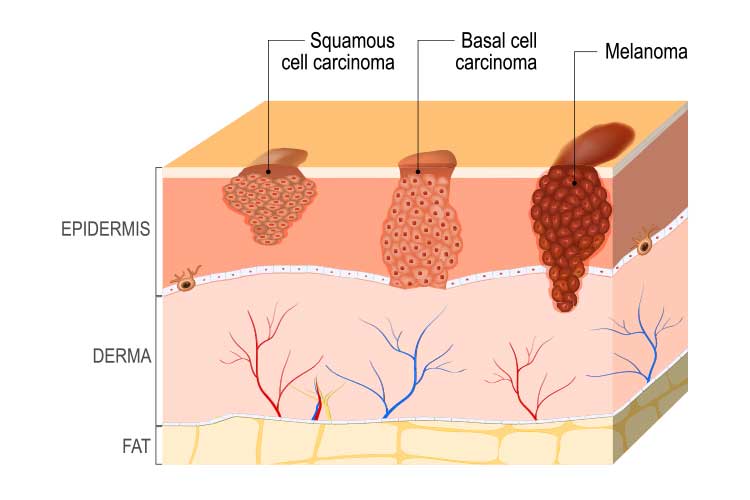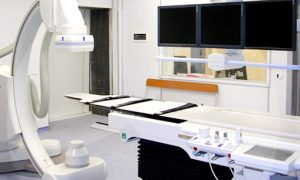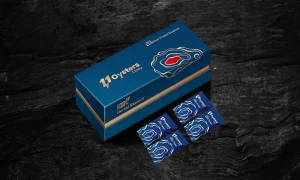
As skin cancers go, basal and squamous cell carcinomas are the most common. They are often come about as the result of damage caused by sun exposure and usually affect adults.
Where do skin cancers start?
Most skin cancers start in the uppermost layer of skin, the epidermis. There are three main types of cells in this layer:
Basal cells
Basal cells are located in the lower part of the epidermis, referred to as the basal cell layer. As the skin’s squamous cells on the surface naturally shed, basal cells constantly divide to form new ones. As these cells move up in the epidermis, they turn flatter to eventually become squamous cells. Skin cancer that originates in the basal cell layer is known as basal cell skin cancer or basal cell carcinoma.
Squamous cells
These are located in the outer part of the epidermis. As mentioned, they are constantly being shed as new cells form. Cancer of the squamous cells is referred to as squamous cell carcinoma.
Melanocytes
Melanocyte cells make melanin, which gives the skin a darker pigmentation. It also acts a natural sun screen, helping to protect lower layers of skin from UVA and UVB rays. It’s melanocyte cells where melanoma begins, and is considered one of the most dangerous type of skin cancer.
The epidermis is separated from the deeper layers of skin by the basement membrane. When a skin cancer becomes more advanced, it generally grows through this barrier and into the deep layers beneath.
Skin cancer treatment
As with all cancers, a favourable prognosis depends largely on how early the disease is detected and treated.
Most basal cell and squamous cell carcinomas can be cured as long as they are caught early. This is essential, because skin cancers become more dangerous – and often more disfiguring – as they grow.
Larger or more advanced skin cancers mean extensive treatment is likely to be required, and the chance of metastasis is also higher. Melanoma in particular is known to be fatal without fast and effective treatment.
Skin cancer treatment itself can usually be performed on an outpatient basis. Pain is typically minimal and simply requires a local anaesthetic. Most wounds will heal naturally afterwards with little scarring, however if the cancer has spread to other organs further surgery may be needed. The patient may also be referred for radiotherapy and/or chemotherapy.
In order to remove the skin cancer, options include:
- Excisional surgery
- Cryosurgery
- Curettage and electrodesiccation (electrosurgery)
- Mohs surgery
- Radiation therapy
- Laser surgery
- Photodynamic therapy
- Topical medications
- Medications for advanced BCC
A common skin issue – or something more serious?
Designed specifically for nurses and front line allied health professionals, PDUK offers an excellent professional development course worth 7 hours of CPD called Recognising and managing acute skin conditions in primary care.
The one-day session will boost your confidence in assessing and safely managing common skin conditions, including signs of cancer, and is held online. This makes it ideal for interactive, hands-on learning that fits around work shifts and family life. However, the course can also be taken face-to-face if you wish.
All course materials, evaluations and a certificate are provided but as always spaces are limited so we recommend signing up as early as possible.



